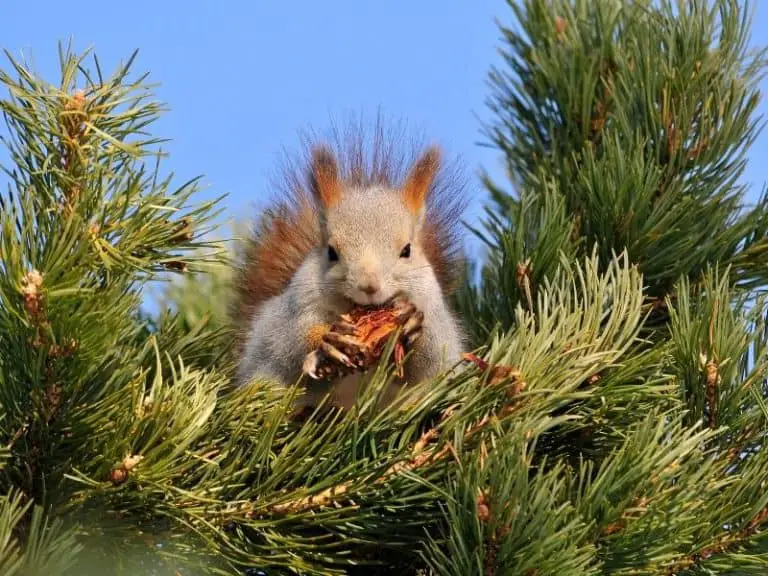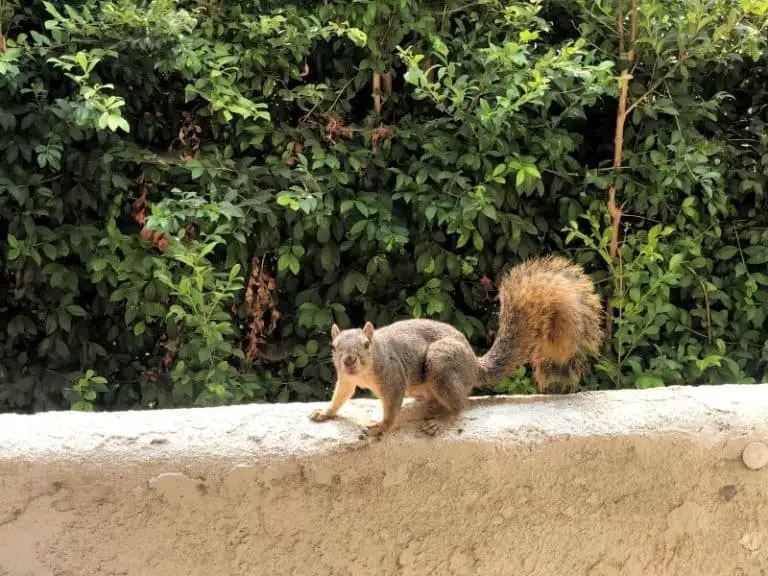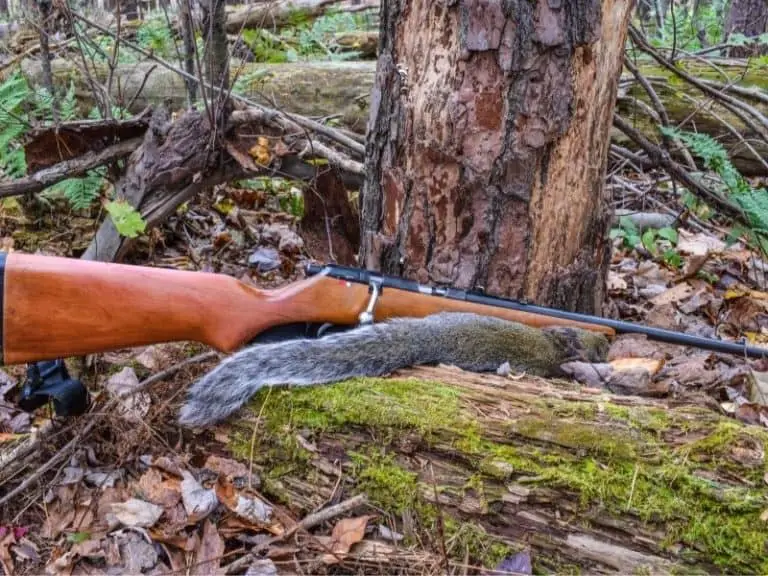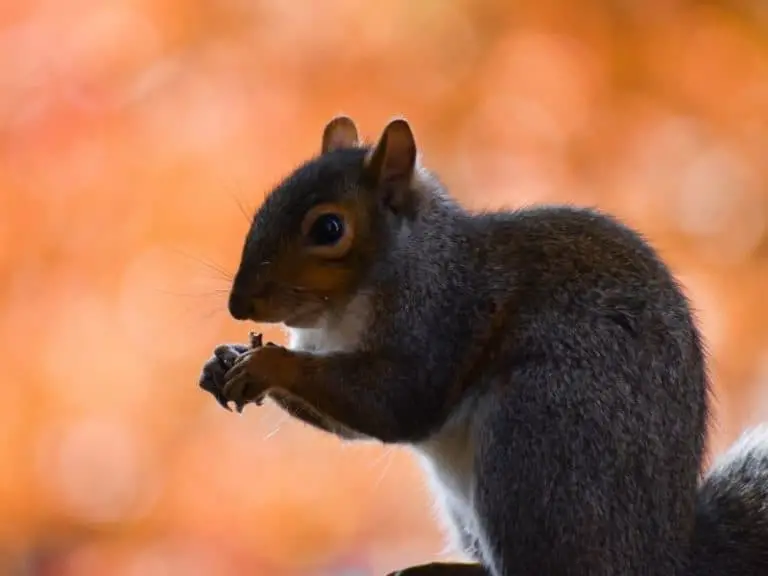Will Squirrels Eat Rat Poison? Why or Why Not?
Squirrels can be a real pest in the home and yard, and many ways have been tried through the years to keep them out, such as killing them with rat poison, trapping them, and various other techniques.
Squirrels do eat rat poison, and many rat poisons are quite effective in killing squirrels. However, the best option would be to use the type of poison that is precisely made for dealing with squirrels, especially the ones that contain Bromadiolone, Brodifacoum, or Diphacinone active ingredients.
Poisoning squirrels can be much harder than trapping or exclusion, and it is less effective. In addition, registered rodenticides do not exist for squirrel use.
And since rat poison was not designed to be applied as poison for squirrels and chipmunks, they may possibly only get injured and not die in consuming the poison.
Besides, if they indeed get killed by the poison, they could crawl off in some dark and inaccessible corner before dying, thus leaving a disgusting smell that is hard to find or extract once their body starts to rot.
So let us explore how to enable rat poisons to work on squirrels.
Top Poisons for Squirrels
In this section, we will deal with examples of top rat poisons that have been recommended for use on squirrels by pest exterminators.
We will enumerate their main features and characteristics as well as their advantages and disadvantages.
Bromadiolone (Farnam Just One Bite 2)
This is considered by some exterminators as the top rodent control poison, effective on mice, rats, and squirrels. According to pest control professionals, squirrels just absolutely love eating it and dying from it.
Pros
- This poison is quite easy to apply and handle
- Highly palatable and weatherable
- It is highly effective and works well when all other poisons or methods fail
- Its effect is long lasting
- It is effective whether used indoors or outdoors
- Considered one of the best poisons for squirrels
- Will solve your squirrel problem while preventing recurrence
- Secondary poisoning with non-target animals is minimal because its antidote, which is vitamin K1, is widely available
- The available preparation is excellent for warehouses and farms
- Takes only one bite from its victim to effectively work
- Effective not only for squirrels, but also for mice, chipmunks, and warfarin-resistant rats as well.
Cons
- It is dangerous for kids and pets if applied indiscriminately and not placed in secure bait stations
- You need to use gloves when using it and working with it to protect the skin
- Only available in a large, 18-pound bucket which may be too much for home use.
Recommended Products

Farnam Just One Bite II Bars

Contrac All-Weather Blox Rodenticide
Brodifacoum (Final Blox All-Weather)
This has also been proven to quickly take effect with just one bite, and is also effective regardless of the environment and setting; it is applicable both at home and in industrial locations. This rodenticide is recommended by many licensed exterminators for squirrels.
Pros
- Effective as a squirrel killer; only takes one bite to work
- Weather resistant; useful both for indoor and outdoor use
- Can be used in residences and commercial settings
- Very easy application
- Long lasting
Cons
- Hazardous for kids and pets; should only be used with bait boxes or stations
- Very toxic; gloves must be used during application
- Available in a large, 18-pound bucket which may be too much for home use.
Recommended Product:
Diphacinone (JT Eaton Blocks)
This is another excellent means of how to poison a squirrel which comes in variations of peanut butter or apple flavor chunks. These tasty treats make it popular among rodents such as squirrels, and they eat it non-stop.
Squirrels will eat the bait and come back over and over for more doses before they finally succumb to poisoning and die.
Pros
- Proven effective
- Easy application
- Affordable
- The bright green variant makes it unmistakable for kids to identify it as a non-food item
- Weather-resistant; applicable in highly humid and moldy conditions
Cons
- Hazardous for kids and pets
- State regulations make its formulation not too potent; the poison may take three to five or up to thirty days before having fatal effects
Recommended Product:

JT Eaton Bait Block Rodenticide
Diphacinone (Neogen Rodenticide Ramik Nuggets)
An alternative formulation of the same diphacinone anticoagulant ingredient, this is an exceptional and versatile poison pellet for rodents that have a similar effect.
And even if the poison takes effect after a few days, this formulation eliminates the need for traps and other means of eradicating squirrels. They can help you eliminate squirrel pests in the long run.
Pros
- Versatile and effective
- Exceptionally easy application
- Damp-proof, weather-resistant
- Suitable for indoor as well as outdoor use
- Does not require use of other types of baits or traps
Cons
- Not safe for dogs, cats, and other pets
- Does not work instantly, although the wait is worth it eventually
Recommended Product:
How to Apply the Poison Baits Against Squirrels
At this point, we have established that there is merit in trying poisons and baits to eradicate squirrels.
These rat poisons have advantages and disadvantages, but it is worth trying due to the considerable damage being inflicted by squirrel infestation.
The drain on the economy and cost of repair from the destruction that squirrels cause make investigating all avenues and means worth it to stop their assault on our homes, gardens, and farms.
Usually, the method that is most cost-effective regarding the use of poisons on squirrels is the application of baiting programs. This is especially true if the level of infestation is very high.
Baits are usually manufactured in the form of pellets or grains that are treated with the active poison ingredient. Usually, the most utilized poison is an anti-coagulant, which causes internal bleeding in the squirrel that results in its eventual death.
In order to make the most out of your poison baits, it is best used during spring.
This is due to the fact that at this time of the year, squirrels feed highly on seeds. This is a time when they readily accept your baits. Ideal times are late spring up to early summer.
During the fall, the tendency of squirrels is to store a considerable number of seeds rather than immediately consume them. Thus, at this time of the year, a higher amount of bait may be necessary to get the desired results and control the squirrel population.
Prior to using your poison baits, try first to put a little amount of grain that is untreated (breakfast oats, for example) near the squirrel burrows or entry points during the morning.
Go back to the site during late afternoon and check if the squirrels took your grains. This also ensures that other nocturnal animals did not eat your grain.
Once you observe that the squirrels are taking and consuming the untreated grain, you may start to proceed with using the poison bait.
Do the same procedure as with the untreated oats or grain, and observe the results. If the squirrels did not take the bait, wait for several days up to a week before trying again.
The bait will only takes effect if the squirrels actually eat them.
This is important because in a place with a lot of nuts, a time will come when the squirrels will begin eating the nuts so that they are no longer quite interested in grains. You will thus be only wasting your grain baits.
Therefore, your baiting program should be conducted prior to times like this, in order for you to ensure that it is the period when the squirrels tend to feed on your baits.
It cannot be understated that the poison baits should be carefully applied in accordance with the label instructions indicated.
They are hazardous materials, and may cause unintended negative consequences if not used according to the instructions given by their manufacturer.
Differences Between Various Poison Baits and Their Application
The types of poisons known as diphacinone and chlorophacinone are known as anti-coagulant multiple-dose baits.
They are applicable for placement in rodent bait stations, for spot treatments near squirrel burrows, and broadcasted over bigger areas rife with infestation.
These poisons are intended for multiple-dose application, so that they will be most effective when the squirrels feed on them several times, for example over a three- to five-day period.
Therefore, in spot and broadcast treatments, it may be necessary for them to be administered two to three times or more.
Zinc phosphide is an acute poison which is also useful against squirrels. It already effectively kills the squirrels even after only one feeding session.
Thus it can eradicate a larger number of pests in a shorter period of time compared to anti-coagulant poisons like diphacinone.
Unfortunately, zinc phosphide also has a distinct taste and odor that a lot of squirrels appear to be deterred by. In addition, squirrels may occasionally eat only a small dose that is not enough to kill them.
This sublethal dose will cause zinc phosphide to weaken the animals and make them sick; it will not, however, be enough to totally kill them off.
This will eventually cause squirrel to exhibit bait shyness with zinc phosphide.
This is why squirrel populations are usually more effectively controlled when anti-coagulant poison baits are used. These baits have no issues regarding bait shyness which is observed to occur with zinc phosphide.
Therefore, when using zinc phosphide, it is advisable to pre-bait the treatment area using untreated grain for two or three days before you start to apply the actual poison treated grains.
This has been shown to reduce incidences of bait shyness in the target rodents and improve the baiting program’s effectiveness.
Using zinc phosphide, despite the possibility of bait shyness, is still warranted or worth trying because when it is successful, results can already by seen within a mere 48 hours after the bait is applied.
Applying Spot or Broadcast Treatments

If the poison bait is specified as applicable for spot treatments, then you may apply them as such. These poisons may include anti-coagulant baits and zinc phosphide.
Spot treatment is an economical but nonetheless effective means of controlling small squirrel populations.
It is important to remember that spot applications need regular bait reapplication in order that no interruption will occur in the squirrel’s exposure to the poison. This ensures that control is ongoing and results are seen as early and as completely as possible.
Meanwhile, the broadcast method of treatment is a technique that involves scattering the bait around the squirrels’ native foraging grounds.
It takes advantage of the behavior of ground squirrels whereby their natural foraging instincts let them encounter the treated grains.
The broadcast method has the advantage of minimizing the risks of exposure of non-target animals to the poison who are not as widespread or thorough in their seed foraging behavior.
In this regard, it is not advisable to apply your bait into piles on the ground.
Making bait piles will increase the probability of livestock and other non-target animal wildlife species to encounter and ingest the poison. This has several disadvantages, such as wasting your product, killing off non-pest wildlife, and not being able to control the squirrels.
When the populations of ground squirrels are bigger and their range extends more broadly, the method of broadcast application may be used for both anti-coagulants and zinc phosphide.
This technique is an economical means of effectively distributing the poison while successfully controlling the pest populations.
After ingesting the poison, squirrels usually retreat to their burrows after they start getting sick, they then usually die there.
Squirrels in attics, however, maybe a different story, as they might die inside the house. For ground squirrels, 20 to 30% percent may die while aboveground.
Using Bait Stations
There are different types of bait stations that are commonly utilized for anti-coagulant baits such as chlorophacinone and diphacinone.
All of them are designed to allow squirrels access to the baits while preventing larger, non-target animals from consuming the poison.
For particular areas, particular bait stations are not allowed to be used, such as in California where only special station types are allowed for use within the natural range of endangered kangaroo rats and San Joaquin kit foxes.
The special bait stations are meant to ensure that the endangered and protected species in the area do not get access to the poison.
For such areas, it is advisable to consult the local agricultural office and pesticide regulatory body in charge of these matters.
They will be able to advise you of the latest and permissible recommendations regarding poison baits and bait station use in such areas.
It is worth noting that only anti-coagulant poison baits can be used for bait stations.
Points to consider in deploying bait stations
- For ground squirrels, place the bait stations near burrows or runways. Secure their placement in such a way that they are easily tipped over. If needed, the field perimeter and area where the invasion comes from are also ideal locations for placing the baits.
- Put a distance of 100 feet between each station. Shorten the distance if the volume of ground squirrels is very high.
- You may check the stations once a day and replenish them as needed. More consumption mean more visits and higher number of squirrels being dosed with the poison.
- Make sure that you always replenish the bait as often as necessary, because the effectiveness of the baiting program is highly dependent on the continued exposure of the pests to the bait. If the replenishment is interrupted, it will significantly decrease the success of the program.
- Pick up any spilled baits so that they can be reapplied and not wasted. Moldy and wet baits should be discarded and replaced.
- A successful program will typically need at least two to four weeks of continuous application of bait. Once you observe that feeding has ceased and that no more ground squirrels are being seen, then you may properly remove and dispose of any unused bait.
Be sure that all ground squirrels have been eradicated and no recurrence of invasion is going to occur before you remove your stations.
It is important to also properly dispose of dead squirrels as often as they are seen in order to ensure that secondary poisoning does not occur in predators, scavengers, and dogs.
This will also help ensure the sanitation of your environment.
You may bury the bodies, making sure that the graves are deep enough so that they cannot be dug up by hungry scavengers. Never touch dead squirrels with your bare hands.
It is also important to remember that you should consider the possible danger to people, livestock, pets, and other non-target wild animal species prior to initiating a poison control program.
It is not worth the risk if they can be exposed inadvertently. In such cases, use another pest control method instead.
Related Questions
Methods of keeping squirrels away from the yard
There are many ways by which you may keep squirrels from invading your property. Some of them are enumerated below.
- Refrain from feeding them so that they do not get encouraged to return again and again.
- Remove squirrel attractants such as seeds, fallen fruit, and nuts.
- Keep your yard free from leaves and debris; rake it regularly.
- Secure bird feeders.
- Secure your garbage cans and keep their lids tight.
- Scare the squirrels with dogs and cats.
- You may use predator urine and spray it in infested places.
- Spray squirrels with automatic water sprinkler systems.
- Exclude squirrels by fencing them out and removing access to entry points.
- Deter ground squirrels with squirrel baffles.
- Use repellants such as capsaicin, chemical repellents, and similar deterrents.
- Plant peppermint and other repellant flowers and herbs such as daffodils, snowdrops, and hyacinth around your area.
- Use traps to catch squirrels and relocate or kill them humanely.
- Make your home squirrel-proof.
Sources
- https://pestkill.org/rodents/squirrels/poison/
- http://www.wildlife-removal.com/howtokillsquirrel.html
- http://www.animalatticpest.com/squirrelkill.html
- https://pestcontrolhacks.com/best-squirrel-poison/
- https://crittercontrolmiami.com/should-i-use-rat-poison-for-a-squirrel-problem/
- https://www2.ipm.ucanr.edu/agriculture/citrus/California-Ground-Squirrels/
Photo credit: ©canva.com/tomonikon
Medical Disclaimer: TheHomePestControl is a digital publisher and does not offer personal health or medical advice. The contents of this website are not intended to substitute for professional medical advice, diagnosis, or treatment.
Affiliate Disclaimer: As an Amazon Associate, I earn from qualifying purchases made on our website. If you make a purchase through links from this website, I may earn a commission at no additional cost to you.








